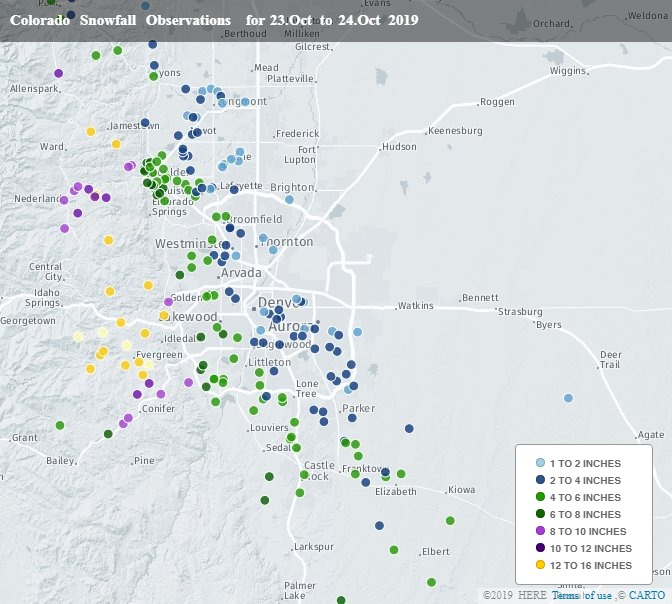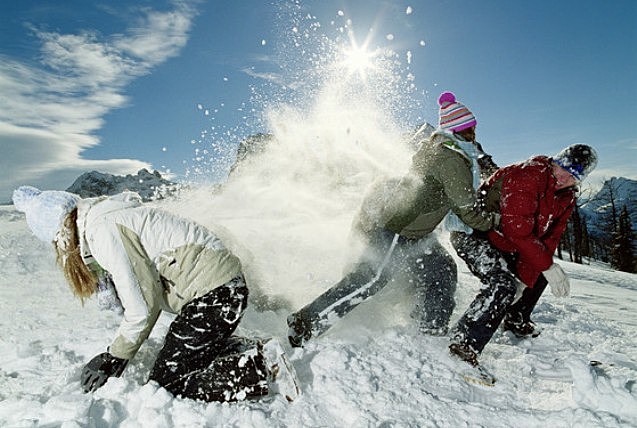


Most of those 30.7 inches (78 cm), 27.6 (70), fell in just 24 hours, a new record for the city for the most snow in 24 hours. It remains the city's all-time greatest snowstorm, compared to its previous greatest snowstorm which was a "mere" 21.3 inches (54 cm). Philadelphia and Pennsylvania ģ0.7 inches (78 cm) of snow fell in Philadelphia (as measured at the official city observation location, Philadelphia International Airport), the most of any major city in the storm's path. Because of unseasonably warm weather in mid-January and a warm rain exceeding an inch (2.5 cm) on Monday, January 15, the snow melted quickly and caused the worst winter flooding in decades for river and stream valleys from Southwest Virginia to New York. In DC, it was known as the "Blizzard of '96" or the "Great Furlough Storm," because it occurred just after the 1996 federal government shutdown and since the Federal government was closed due to the storm, lengthened the time federal employees were away from their jobs in the DC area. Many areas north and west in Maryland and West Virginia received well over 2 feet (61 cm) with a few locations in the mountains of West Virginia and Virginia receiving up to 4 feet (1.2 m). Baltimore received 22.5 inches (57 cm) and Washington Dulles International Airport received 24.6 inches (62 cm).

These bands created whiteout conditions as winds gusted past 40 miles per hour (64 km/h), along with thunder and lightning.īy the morning of January 8, the bands tapered off, and the metro area was left with a blanket of 15 to 25 inches (38 to 64 cm) of snow. But overnight, as the storm slowly crawled northward, extremely heavy bands of snow came in from the east. At that time, the metro area received 13 to 17 inches (33 to 43 cm), and after a few hours of sleet and then a complete stop for several hours, it seemed the worst was over. Snow began falling on Washington, D.C., and Baltimore during the early afternoon of January 6, and continued at a consistent rate until mid-afternoon the next day. Washington, D.C., and Baltimore Picture taken of the aftermath of a Washington Metro accident at Shady Grove station during the blizzard, which resulted in the death of a Metro operator. High winds that accompanied the blizzard caused white out conditions and drifts of up to 10 feet (300 cm) in Patrick County. George Allen declared a state of emergency as power lines went down, people were trapped in their houses, and at least eight weather-related deaths occurred. Snowfall reached three feet (91 cm) in the Shenandoah Valley and exceeded two feet (61 cm) in much of the Virginia mountain and Piedmont areas. The heaviest snow fell in Page County, with around 37 inches (94 cm). Roanoke got a record-breaking 23 inches (58 cm). Most of Virginia was impacted with the more central and western parts receiving one to three feet (30 to 91 cm) of snow. Most of the Shenandoah Valley received two to three feet (61 to 91 cm) of snow. Impact Virginia A NOAA snowfall map depicting accumulation in Virginia, after the North American blizzard of 1996. Along with the March Superstorm of 1993 and the January 2016 United States blizzard, it is one of only three snowstorms to receive the top rating of 5, or "Extreme", on the Northeast Snowfall Impact Scale (NESIS). It was followed by another storm, an Alberta Clipper, on January 12, then unusually warm weather and torrential rain which caused rapid melting and river flooding in the Northeast Floods later that month.

This storm was a classic example of a nor'easter, but the storm would not have been as historically significant without the presence of the arctic high pressure system located to the north of New York. The City University of New York reported that the storm "dropped 20 inches of snow, had wind gusts of 50 mph and snow drifts up to 8 feet high." The North American blizzard of 1996 was a severe nor'easter that paralyzed the United States East Coast with up to 4 feet (1.2 m) of wind-driven snow from January 6 to January 8, 1996. 980 mb (28.94 inHg) at 7:00 am EST on January 8th Ĥ8 inches (120 cm), Pocahontas County, West Virginiaġ54 fatalities total (another 33 took place during flooding after the storm)Ĭontinental United States especially the Northeastern United States


 0 kommentar(er)
0 kommentar(er)
